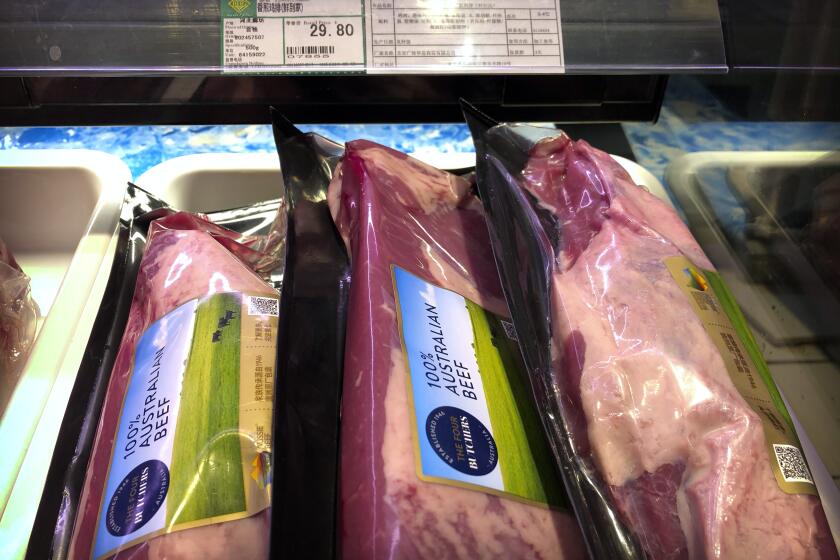Australia to seal off state border as coronavirus infections in Melbourne surge

- Share via
MELBOURNE, Australia — Authorities are preparing to close the border between Australia’s two largest states as the country’s second-largest city, Melbourne, recorded two deaths and its highest daily increase in coronavirus infections Monday.
The border between the states of New South Wales, home to Sydney, and Victoria, home to Melbourne, is due to be shut late Tuesday.
New South Wales Premier Gladys Berejiklian had criticized other states that closed their borders to her state when Sydney had Australia’s largest number of coronavirus cases. But she said she changed her stance because the situation in Melbourne was unprecedented and indicated that the pandemic was in a new phase.
The overwhelming majority of new infections detected in Melbourne in recent weeks were from community transmission. Everywhere else in Australia, the vast majority of people who tested positive for the virus were infected overseas or had been infected by a returned traveler, Berejiklian said.
“What is occurring in Victoria has not yet occurred anywhere else in Australia,” she said Monday. “It’s a new part of the pandemic and, as such, it requires a new type of response.”
Nationwide, Australia has recorded more than 8,500 total infections and 106 deaths.
Australia says it doesn’t want a trade war with China, which is angry at Australia’s push for an investigation into its handling of the coronavirus.
Victoria’s government locked down 36 of the most virus-prone Melbourne suburbs last week and added four more suburbs over the weekend because of the disease’s spread.
Victoria Premier Daniel Andrews said that, of the 127 new cases recorded overnight, 53 were among 3,000 people who have been confined by police to their apartments in nine public housing blocks since Saturday.
Australian Acting Chief Medical Officer Paul Kelly has described the high-rises as “vertical cruise ships” because of the high risk of contagion.
The infections announced Monday surpassed the first surge of infections in Melbourne that peaked March 28 at 111 cases recorded in a day.
New South Wales police board the Ruby Princess, which has become the largest source of coronavirus infections in Australia.
Andrews said he agreed with Berejiklian and Prime Minister Scott Morrison, a Sydney resident, that the border between Victoria and New South Wales needed to close. Three in 5 Australians live in Sydney or Melbourne, and the air services between the two cities before the pandemic were among the busiest in the world.
“I think it is the smart call, the right call at this time, given the significant challenges we face in containing this virus,” Andrews said.
Deputy Chief Medical Officer Michael Kidd confirmed that federal authorities agreed with the closure. The federal government had previously opposed any internal border closures aimed mostly at stopping spread from Victoria and New South Wales. Morrison had urged state leaders to open their borders for the good of the economy.
Kidd said that only 16% of new cases detected in Australia in the last week had involved transmission from overseas. Two weeks ago, 50% of new cases were people infected overseas and whose illness was detected in hotel quarantine, he said.
“The situation in Melbourne has come as a jolt, not just of the people of Melbourne but people right across Australia who may have thought that this was all behind us. It is not,” Kidd said.
Outside Victoria, an additional 13 cases reported in the last 24 hours were people infected overseas. Of those, 10 had been in hotel quarantine in New South Wales and three in Western Australia.
New South Wales police will enforce the Victoria state border closure. Some flights and trains services would continue for travelers who are given permits and exemptions, Berejiklian said.
New South Wales Police Commissioner Mick Fuller said officers would use drones to detect people who attempt to cross the border via forest tracks to avoid the 55 policed road and bridge crossings.
More to Read
Sign up for Essential California
The most important California stories and recommendations in your inbox every morning.
You may occasionally receive promotional content from the Los Angeles Times.











